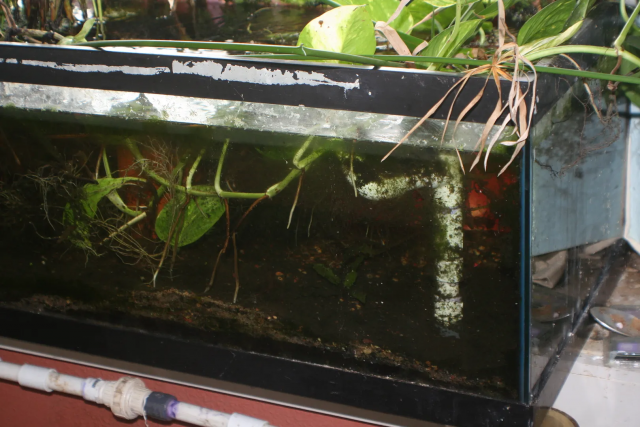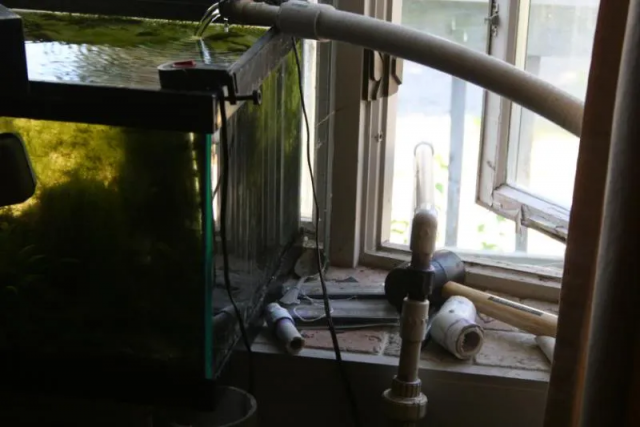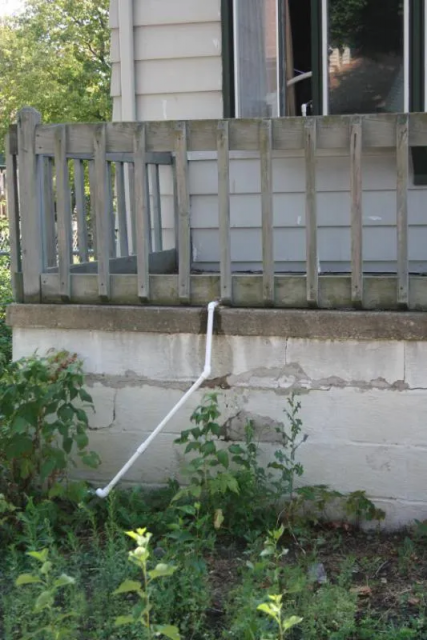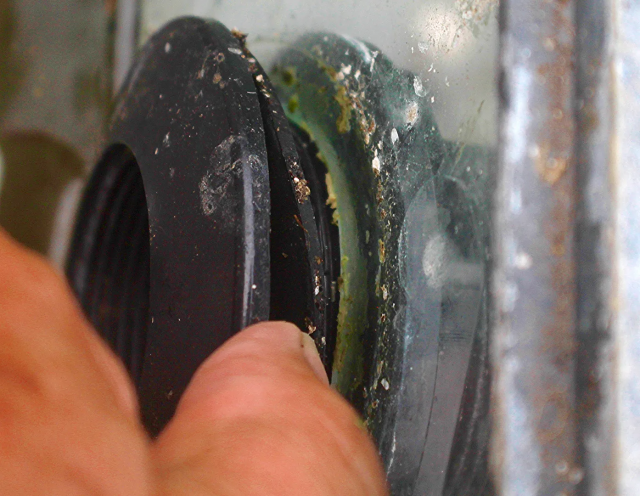BOTTOM DRAIN SYSTEM
- Thread starter Arvie
- Start date
I dont recommend drilling the bottom unless it's in a overflow. Too much risk. A faulty bulkhead...power outage etc. I'd consider drilling on sides. You can always pipe it way down and drill a hole at top of pipe to break siphon in case of a outtage.
Unfortunately someone donate a 250G and it has 2 big bottom hole approx 1 1/2 inch i'm planning to use the 1st hole as bottom drainage and the 2nd one will be close. TBH im fairly new to sump system and i dont even now how will i blocked that 2nd hole. Both hole on the tank are each end one on right bottom and the other one at left middle bottom.
Bottom drains have only one benefit, IMHO, and that is the fact that you can attach different heights of standpipe on top of them in case you might want to change the water level in your tank at some future date. But they are definitely an accident waiting to happen. A stray elbow or a determined monster fish could hit them hard enough to crack or break them and then you have a bona fide disaster. Yes, you could of course build an overflow, but that takes up a lot of room, depending upon the location of the hole. If you are certain that your tank will always be used for fish and will always be filled completely, side-drilling at the top is the way to go.
You can easily cap off those bottom holes by siliconing a piece of appropriately thick glass over them if you want to make it permanent. Make sure you install this on the inside of the tank, not underneath the bottom. This will work for glass tanks or epoxy-sealed plywood. If it's acrylic, I'm sure a similar fix could be done with the correct solvent cement and a piece of acrylic, but I'll leave that for people with experience to comment; I've never had acrylic.
You can easily cap off those bottom holes by siliconing a piece of appropriately thick glass over them if you want to make it permanent. Make sure you install this on the inside of the tank, not underneath the bottom. This will work for glass tanks or epoxy-sealed plywood. If it's acrylic, I'm sure a similar fix could be done with the correct solvent cement and a piece of acrylic, but I'll leave that for people with experience to comment; I've never had acrylic.
Do NOT have bottom drilled holes without a overflow box in place. I have 535g tank and had a bottom drilled 1/4in drain behind a sponge HMF filter. It sprung a leak last Sunday and I had to drain the whole tank and ended up selling my stock.
I will not be setting up again until I close all bottom drains. The overflow box are crucial to stopping a flood.
I will not be setting up again until I close all bottom drains. The overflow box are crucial to stopping a flood.
With bottom drains, standpipes are normally used.
The tank will then only drain to the height of the stand pipe.

The one on the right above has 2 ports (in case one gets plugged with plant debris.
I use threaded bulkheads on the bottom so I can unscrew the standpipe, to facilitate the ease of drawing the entire tank outside.


The stand pipe can also have sections, (for example) one half the height (or 1/4) of the tank that can be removed to send 50% or 25%of the tanks water to the garden for a quick water change.
The tank will then only drain to the height of the stand pipe.

The one on the right above has 2 ports (in case one gets plugged with plant debris.
I use threaded bulkheads on the bottom so I can unscrew the standpipe, to facilitate the ease of drawing the entire tank outside.


The stand pipe can also have sections, (for example) one half the height (or 1/4) of the tank that can be removed to send 50% or 25%of the tanks water to the garden for a quick water change.
I have a bottom corner drilled 180g with an unprotected standpipe, no overflow box. And yeah, it worries me somewhat but I believe i've put all measures in place to drastically reduce any unforseen 'incidents', he says smiling nervously.
If a bulkhead fails on a bottom drilled tank, and you don't have the luxury of an overflow system to rely on, you are in all sorts of trouble, as N nzafi has highlighted. By the way, that sucks man, I wish you a speedy recovery.
If my bulkhead fails I am in all sorts of trouble too. It's one of the reasons why when you are initially putting your bulkhead in place you do it absolutely perfectly and leave nothing to chance. From thoroughly cleaning the area where it's sitting, to correct placement of the gaskets, to tightening them up correctly. And those are just issues to address whilst fitting the bulkhead.
Aftercare is just as important. You don't want to accidently knock your bulkhead/standpipe potentially causing a crack in the bulkhead, and as jjohnwm
said, one of the biggest culprits of this can be a spooked monster fish.
jjohnwm
said, one of the biggest culprits of this can be a spooked monster fish.
I was ultra careful in my initial placement and fitting of my bulkhead and standpipe. I don't touch the bulkhead or standpipe and I only have small fish in my 180g, and all has been well up to now. But, and a big but, plastic degrades overtime and the PVC or ABS bulkhead fittings in your tank are ever so slowly deteriorating. The measures i've put in place will serve me up to a certain degree. For extra insurance maybe hobbyists need to replace bulkheads every 5, 10, or whatever number of years, just like tanks are resealed in case of silicone deterioration.
If a bulkhead fails on a bottom drilled tank, and you don't have the luxury of an overflow system to rely on, you are in all sorts of trouble, as N nzafi has highlighted. By the way, that sucks man, I wish you a speedy recovery.
If my bulkhead fails I am in all sorts of trouble too. It's one of the reasons why when you are initially putting your bulkhead in place you do it absolutely perfectly and leave nothing to chance. From thoroughly cleaning the area where it's sitting, to correct placement of the gaskets, to tightening them up correctly. And those are just issues to address whilst fitting the bulkhead.
Aftercare is just as important. You don't want to accidently knock your bulkhead/standpipe potentially causing a crack in the bulkhead, and as
I was ultra careful in my initial placement and fitting of my bulkhead and standpipe. I don't touch the bulkhead or standpipe and I only have small fish in my 180g, and all has been well up to now. But, and a big but, plastic degrades overtime and the PVC or ABS bulkhead fittings in your tank are ever so slowly deteriorating. The measures i've put in place will serve me up to a certain degree. For extra insurance maybe hobbyists need to replace bulkheads every 5, 10, or whatever number of years, just like tanks are resealed in case of silicone deterioration.
I agree with replacing bulkheads (more importantly the gaskets) every once in a while.
The gaskets get dry rot and as stated above, one tweek with an errant elbow, and you've got a leaker.
This is one reason I never put a sump directly below a bottom drilled tank, because sumps need regular maintenance, so lots of activity.
And water composition, can have a lot to do with how fast gaskets fail.
I had hard, calcium rich water in the states, and it seemed the calcium coated rubber gaskets and helped make them brittle.
Although many have held up for years, if there was occasion to totally tear down a drilled tank, I would use that event to replace gaskets, and if needed bulkheads.

The gaskets get dry rot and as stated above, one tweek with an errant elbow, and you've got a leaker.
This is one reason I never put a sump directly below a bottom drilled tank, because sumps need regular maintenance, so lots of activity.
And water composition, can have a lot to do with how fast gaskets fail.
I had hard, calcium rich water in the states, and it seemed the calcium coated rubber gaskets and helped make them brittle.
Although many have held up for years, if there was occasion to totally tear down a drilled tank, I would use that event to replace gaskets, and if needed bulkheads.

Last edited:








